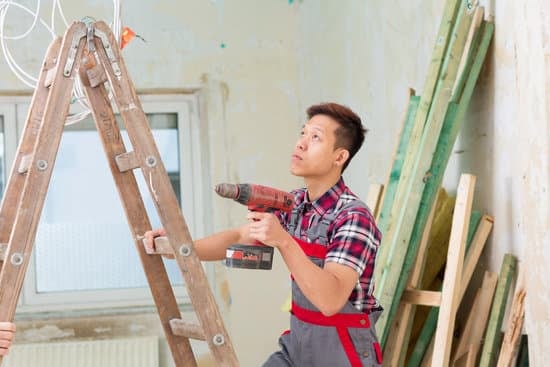Are you looking to share your home improvement skills with others? One of the best ways to showcase your expertise is by creating a home improvement demo video. In this article, we will explore how to create a high-quality video that not only highlights your skills but also provides valuable information for viewers looking to tackle similar projects.
Home improvement demo videos serve as a powerful tool for sharing knowledge and inspiring others to take on their own projects. Whether you are a DIY enthusiast, a professional contractor, or an interior designer, creating an engaging and informative demo video can help showcase your expertise and build your brand.
In the following sections, we will delve into the key steps for creating a successful home improvement demo video. From choosing the right project to editing and adding value, we will provide detailed guidance on each stage of the process. By the end of this article, you will have all the necessary tools to create and share your own compelling home improvement demo video.
Choosing the Right Project
When creating a home improvement demo video, the first step is to choose the right project to showcase. Whether you’re looking to demonstrate your DIY skills or promote your professional remodeling business, selecting the appropriate project is essential to capturing your audience’s interest and showcasing your expertise. Here are some considerations for choosing the right project to feature in your home improvement demo video.
Determine Your Target Audience
Before selecting a project, consider who will be watching your home improvement demo video. Are you targeting homeowners looking for simple DIY solutions, or are you aiming to attract clients interested in larger renovation projects? Understanding your target audience will help guide you in choosing a project that aligns with their interests and needs.
Highlight Unique Techniques or Materials
If you have expertise in specific techniques or have access to unique materials, consider incorporating them into the project featured in your demo video. Highlighting these unique elements can set your video apart from others and position you as a knowledgeable and skilled professional in the home improvement industry.
Showcase Before-and-After Transformation
One of the most compelling aspects of home improvement demo videos is witnessing the transformation of a space. Select a project that will result in a significant before-and-after difference, whether it’s updating a kitchen, building custom furniture, or creating an outdoor living space. The visual impact of a dramatic transformation will captivate viewers and inspire them to take on their own home improvement projects.
By carefully considering these factors when choosing the right project for your home improvement demo video, you can create content that resonates with your target audience and effectively showcases your skills and expertise in the field.
Pre-Production Planning
Creating a detailed plan for your home improvement demo video is crucial for the success of your project. Without proper pre-production planning, you may encounter difficulties during the filming process and end up with a video that lacks clarity and organization. To ensure that your video is well-executed and engaging, follow these steps for pre-production planning:
1. Define the purpose of your video: Determine the main objective of your home improvement demo video. Are you trying to showcase a specific skill or technique? Are you aiming to promote a product or service? Understanding the purpose of your video will guide all other aspects of pre-production planning.
2. Outline the content: Create a detailed outline of the content you want to include in your video. Break down the home improvement project into individual steps or segments, and decide how you will demonstrate each part on camera. Consider any important details or tips that you want to convey to your audience.
3. Scripting and storyboarding: Write a script that outlines any narration or dialogue that will be included in your video, as well as any key points that need to be highlighted. Additionally, create a storyboard that visually depicts each scene or shot in your video, providing a roadmap for filming.
By thoroughly planning out these essential components before beginning production, you can ensure that your home improvement demo video is well-organized and effectively conveys its intended message to viewers.
Gathering the Right Tools and Equipment
When creating a home improvement demo video, having the right tools and equipment is crucial to ensure that you can capture the project efficiently and effectively. Here are some essential items to gather before you start filming:
1. Camera and Tripod: Invest in a high-quality camera that can capture clear and crisp footage. A tripod is also essential for stabilizing your shots.
2. Lighting Equipment: Proper lighting is crucial for showcasing the details of your home improvement project. Consider using softbox lights or LED panels to ensure even lighting throughout your filming space.
3. Audio Recording Devices: Good audio quality is just as important as good visuals. Invest in a lavalier microphone or shotgun microphone to capture clear sound without background noise.
4. Safety Gear: Depending on the nature of your home improvement project, it’s important to prioritize safety. Make sure to have protective gear such as goggles, gloves, and masks if necessary.
5. Editing Software: While not strictly “equipment,” having the right editing software is essential for putting together a professional-looking home improvement demo video. Programs like Adobe Premiere Pro or Final Cut Pro are popular choices for professional video editing.
By gathering these essential tools and equipment, you’ll be well-prepared to film a high-quality home improvement demo video that will resonate with your audience.
Remember, having the right gear is only part of the equation – knowing how to use them effectively is equally important. Take the time to familiarize yourself with your equipment and learn how to maximize its potential before you start filming.
Setting Up Your Workspace
When setting up your workspace for filming a home improvement demo video, safety should be your number one priority. Before starting any project, ensure that the area is clear of any hazards or obstacles that could pose a risk to yourself or others. It’s also important to have a well-lit environment, so consider adding additional lighting if necessary, especially if you’re working in areas with poor natural light.
In addition to safety considerations, it’s essential to create a functional filming environment that allows you to capture the project effectively. This may involve rearranging furniture or clearing out clutter to make space for the camera and equipment. Consider the best angles and perspectives for filming, and make adjustments as needed to ensure that viewers can see each step clearly.
Another important aspect of setting up your workspace is organizing your tools and materials in a way that is both visually appealing and practical for filming. Keep in mind that neatness and organization can greatly improve the overall look of your video, so take some time to arrange everything in an orderly manner before you start filming.
Finally, don’t forget about audio considerations when setting up your workspace. Try to minimize background noise and echo by using sound-absorbing materials such as rugs or curtains. A good quality microphone can also help capture clear audio for your home improvement demo video.
| Considerations | Recommendations |
|---|---|
| Safety | Clear hazards, add lighting |
| Functionality | Rearrange space for better filming angles |
| Organization | Neatly arrange tools and materials |
| Audio | Minimize background noise, use quality microphone |
Capturing the Process
Camera Setup and Positioning
When capturing the process of a home improvement project, it’s crucial to have the right camera setup and positioning to ensure that every step is clearly recorded. Consider using a tripod to stabilize the camera and avoid shaky footage. Additionally, experiment with different angles and distances to find the best way to showcase each step in your video.
Lighting Considerations
Proper lighting is essential for capturing high-quality footage of a home improvement project. Natural light can often produce the best results, so if possible, choose a workspace with ample windows. If natural light is not available or sufficient, consider investing in artificial lighting to ensure that every detail of the project is clearly visible on camera.
Recording Techniques
When filming a step-by-step home improvement project, it’s important to use recording techniques that effectively capture the process. Consider using close-up shots to highlight specific tasks, as well as wide shots to provide an overall view of the project. Additionally, be mindful of audio quality and consider using a microphone to capture clear sound throughout the filming process.
Editing and Adding Value
After capturing the footage of your home improvement project, the next step is to enhance your video with graphics, music, and voiceovers. These elements can help to make your video more engaging and informative for your audience.
When it comes to editing your video, consider adding graphics such as text overlays to highlight important steps or key information throughout the project. This can help viewers follow along with the process more easily. Additionally, incorporating music can add to the overall ambiance of the video and keep viewers engaged.
Choose music that complements the tone of your project and enhances the viewing experience. Voiceovers can also be a valuable addition, especially if you want to provide additional explanations or insights into specific steps of the home improvement process.
In terms of software, there are numerous editing tools available for both beginners and advanced users. Popular options include Adobe Premiere Pro, Final Cut Pro, iMovie, and Windows Movie Maker. Take time to familiarize yourself with these programs and experiment with different features to enhance the visual and auditory aspects of your video.
Remember that while adding these elements can elevate your video’s production value, it’s important not to overpower the main focus – which is showcasing the home improvement project itself. The goal is to strike a balance between enhancement and distraction.
Sharing Your Work
Once you have finished editing your home improvement demo video, the next step is to share your work with the world. Uploading your video to popular platforms like YouTube, Facebook, or Instagram will help you reach a wider audience and showcase your skills. Before you hit that upload button, it’s important to consider a few tips for promoting your video effectively.
First, choose the right platform for sharing your home improvement demo video. While YouTube is the most popular choice for DIY and home improvement content, don’t discount other social media platforms like Facebook and Instagram. Each platform has its own unique audience and features that can help you promote your video in different ways.
In addition to choosing the right platform, it’s important to optimize your video’s title, description, and tags to improve its visibility in search results. Use relevant keywords related to your home improvement project and include a compelling description that entices viewers to click on your video. You can also use custom thumbnails and end screens to encourage viewers to watch more of your content or subscribe to your channel.
| Tips for Sharing Your Home Improvement Demo Video | Description |
|---|---|
| Choose the Right Platform | Consider using YouTube, Facebook, or Instagram. |
| Optimize Title, Description, and Tags | Use relevant keywords and compelling descriptions. |
| Custom Thumbnails and End Screens | Encourage viewers to watch more of your content. |
Conclusion
In conclusion, the impact of high-quality home improvement demo videos cannot be overstated. These videos have the power to inspire and educate viewers, providing them with valuable tips and ideas for their own projects. By showcasing your skills and knowledge in a well-produced video, you can establish yourself as an authority in the home improvement space and attract a larger audience.
Additionally, creating and sharing home improvement demo videos can also benefit your own business or brand. If you’re a contractor or DIY expert, these videos can serve as a showcase of your skills and expertise, helping you attract potential clients or customers. By consistently producing informative and engaging content, you can build a loyal following and establish yourself as a trusted source for home improvement advice.
Moreover, high-quality home improvement demo videos have the potential to go viral on social media platforms, reaching a wide audience and increasing your visibility. As more people engage with your content, you’ll have the opportunity to connect with like-minded individuals, share knowledge, and even collaborate on future projects. Ultimately, by leveraging the power of video to showcase your work and expertise, you can make a significant impact in the world of home improvement.
Frequently Asked Questions
How Do You Demo a House for Renovation?
Demoing a house for renovation typically involves removing fixtures, cabinetry, flooring, and other materials that will be replaced or upgraded. The process can vary depending on the extent of the renovation, but generally involves using tools like sledgehammers, crowbars, and power tools to dismantle and remove existing elements of the house.
It’s important to take safety precautions and potentially hire professionals for certain aspects of the demolition to ensure it is done correctly.
Can I Do My Own Demo?
Whether or not you can do your own demo depends on your level of experience with home improvement projects and the specific requirements of the demolition work. While some minor demos may be manageable for DIY enthusiasts, larger or more complex projects might be best left to professionals who have the expertise and equipment needed to safely complete the job.
Before attempting a demo yourself, it’s crucial to assess what needs to be done and weigh the potential risks involved.
How Do I Prepare for a Home Improvement Project?
Preparation for a home improvement project begins with thorough planning and research. This can involve setting a budget, establishing a timeline, obtaining any necessary permits or approvals, and hiring contractors if needed.
Next, it’s important to gather all materials and tools required for the project and make sure you have a clear understanding of each step involved in the improvement process. Lastly, preparing mentally by anticipating potential challenges can help manage expectations and decrease stress throughout the project.

I’m thrilled to have you here as a part of the Remodeling Top community. This is where my journey as an architect and remodeling enthusiast intersects with your passion for transforming houses into dream homes.





